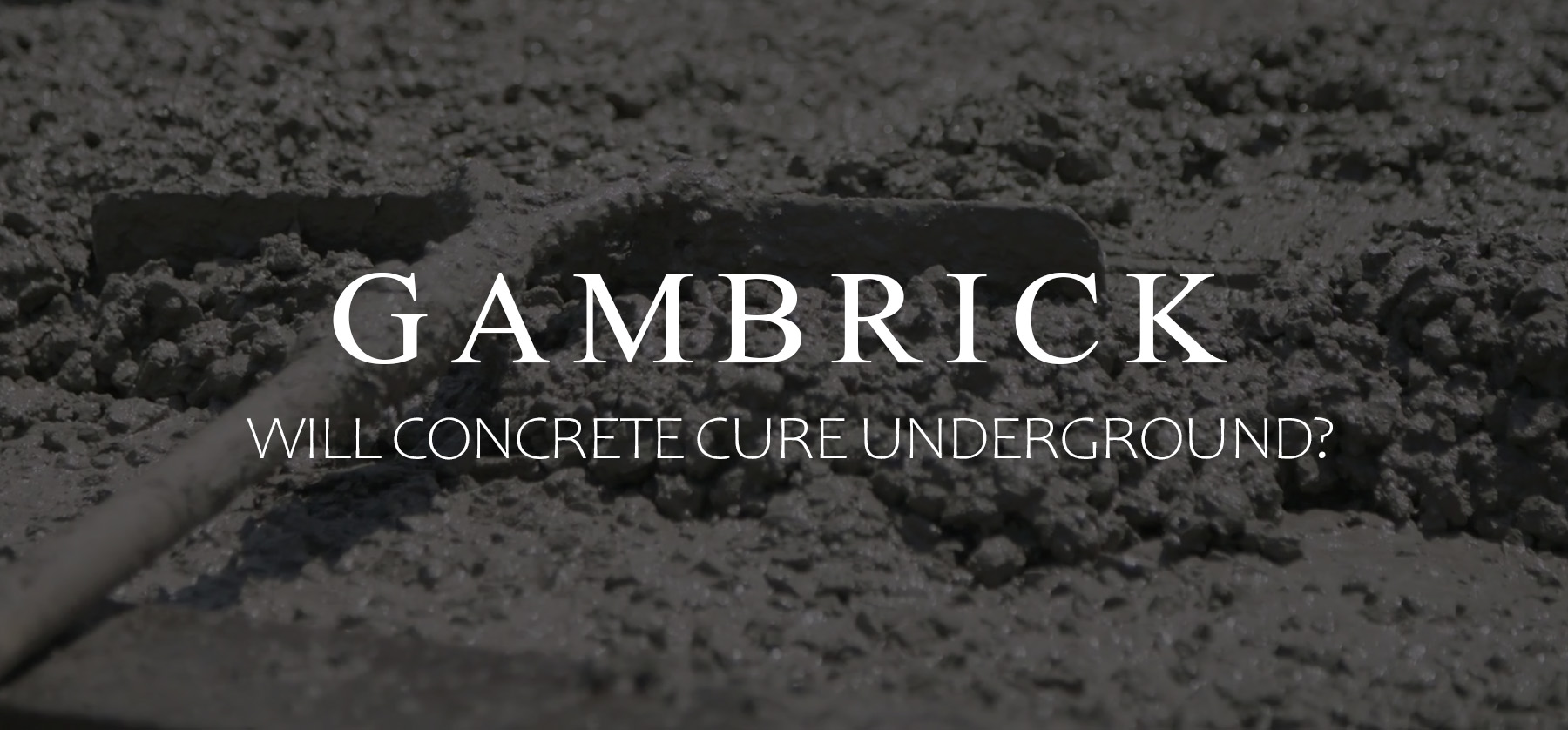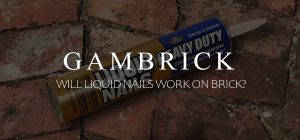
Will Concrete Cure Underground?
I’ve been a mason and home builder for over 25 years and can tell you from firsthand experience that concrete will cure underground just as easily as it does above ground. The chemical reaction that occurs between water and cement, called hydration, will occur even if the concrete is covered in dirt. This is a common practice when we use concrete for fence posts, mail boxes or to underpin a cracked footing.
Concrete is a strong and durable building material. It’s made by mixing cement, sand and stone together with water. Different strength mixes are made by altering the ingredients and their ratios. When water is mixed with cement, a chemical reaction occurs which forms a paste that later dries and hardens. This paste is what binds the stone and sand together to form concrete that’s hard, dense and strong.
Concrete continues to dry and harden over time. This process is called curing and it starts the moment water is mixed with cement. The entire process take around 28 days to complete and occurs whether the concrete is above ground or below.
It’s better for concrete to cure slowly. When concrete dries too quickly it can become brittle and crack. When the concrete is underground, temperatures are more even and there’s no direct sunlight. This means the concrete can dry out slowly over time which can produce even stronger concrete.
There’s can be a lot of moisture underground. It’s OK to pour concrete in a light rain, but make sure there won’t be heavy rain for at least a few days. If it does rain, cover the area with a tarp. Ground water mixing with the cement before it’s dry can weaken the concrete.
How Long Does Concrete Take To Cure Underground?
Concrete is poured underground for all sorts of reasons like footings, setting fence posts, underpinning a foundation or building a tunnel. That concrete then needs to dry and cure before you can build heavy loads atop it. So how long does it take concrete to cure underground?
Concrete takes 28 days to cure underground. It doesn’t matter if concrete is poured grade level or is covered by dirt, its cure time is the same. Concrete starts curing right away, but it takes around 28 days to reach full strength. However, it’s usually strong enough to walk and build on after a few days to a week. If the concrete only needs to support the weight of foot traffic, 24 – 48 hours is usually enough time. However, if the concrete needs to support a foundation wall, I’d wait at least a week.
There are a few factors that effect how long it takes underground concrete to set and cure.
The weight of what you’re building on top of the concrete has a lot to do with curing. For example, 3500 PSI concrete is 3500 PSI at 28 days of curing. At 15 days it’s around 1800. That’s strong enough to walk on and to support some structures. However, if you’re building something extremely heavy you may need to wait longer.
Moisture is a huge issue that effects curing. Keep excess ground water away from the concrete until it’s hard enough to repel it. This usually takes a day.
Temperature is another important factor. If the concrete is poured above the frost line and temperatures dip below freezing, use a warming blanket to keep the ground above freezing. If water inside your concrete freezes before the concrete has a chance to strengthen, it can totally destroy the slab.
Will Concrete Cure Without Air?
Concrete is a unique building material because it’s a mixture of ingredients. Sand, stone cement and water. Each ingredient serves an important purpose to make concrete. Sand make concrete gritty, stone adds strength, cement is the active ingredient that binds it all together like a glue, and water activates the cement. A chemical reaction occurs between water and cement that creates a paste that later hardens like rock. This process is called curing.
A few important things are needed to dry and cure concrete, but air isn’t one of them.
Concrete will cure without air. Even if wet concrete is completely buried underground it will still cure to full strength.
Concrete goes through a chemical reaction as it cures. It releases moisture and dries which forms a super strong crystalline structure permanently binding the materials together. Air can actually hurt the drying process if it’s overly dry or hot. Hot and dry air can suck moisture out of the slab too quickly which speeds up curing. This causes weak concrete and cracks.
Wind has a similar effect. Air passing over the slab can collect moisture as it moves which can dry out the concrete too quickly.
To counteract dry air, heat and wind, masons spray the surface with water to keep the slab moist. Delaying curing is important if you want the concrete to reach full strength.
Curing concrete underground can be a huge benefit in some situations because you won’t have to worry about wind, heat or dry air. When concrete is under dirt, the temperature and moisture conditions can be controlled and made stable.
Will Concrete Cure In Cold Weather?
When cement mixes with water it starts a chemical process called hydration. Hydration creates a super strong crystalline structure inside the concrete which binds sand, stone and cement together. As the mix dries and hardens this is called curing, it grows stronger. Several outside factors can effect how the concrete cures. One of them being temperature.
Air and ground temperature can affect the concrete curing process. Concrete will cure in cold weather but not if the temperature dips below below 40 °F (4 °C). At or below freezing temperatures, the water used to mix concrete will start to freeze. Frozen water expands which creates tremendous amounts of pressure inside the concrete. This pressure can break the internal bonds that need to form and strengthen during curing.
If moisture freezes inside the concrete before it’s cured enough, the concrete will deteriorate. I’ve seen entire slab reduced to powder because of freezing. It’s very important to keep a concrete slab warm for the first week or so after its been poured.
The ideal temperature for curing concrete is between 40°F and 60°F (4°C and 15°C). To keep the slab at this temperature, you can use warming blankets or a tent with heaters.
When concrete is kept at this temperature, it will cure properly and grow strong.
Concrete will cure in cold weather, but it needs help when temperatures fall below freezing.
Will Concrete Cure Underwater?
Concrete will cure underwater under certain circumstances. You can’t pour wet concrete underwater and expect it to cure strong. Excess water breaks down the chemical bonds created when water mixes with cement. The cement gets really thin and all you have left is a pile of sand and stone. However, if concrete has already gone through the initial 1 to 2 day hardening phase, it can finish curing underwater.
When too much water is added to a concrete mix, it gets watery and weak. The cement breaks down and washes away. All you’ll end up with is a pile of sand and stone.
This becomes an issue if you’re pouring concrete underground and it rains heavily. The ground can swell with moisture and essentially encase your concrete in water. Because the soil should be holding the concrete’s form, it’s not as bad as being totally underwater. However, the cement can still get watered down around the edges of the slab and may start running and mixing with the dirt. This can cause weakened concrete and surface cracks.
If you used a gravel footing, the cement can wash down and into the footing. This can severely weaken the concrete.
The longer concrete has to harden the less susceptible it is to water. Never pour concrete underground if there’s a chance of rain. However, if you pour concrete and it does start to rain, cover the area with a tarp.
The only concrete that can cure completely submerged in water is Roman concrete. It could be poured as a wet mix directly into seawater and still harden like a rock. But Modern concrete doesn’t work like that. Too much water thins out the cement which weakens the bonds that bind concrete together.
How Long Should Concrete Cure Before Building on It?
Concrete is generally used as a footing or pier with another structure built atop it. This is because concrete is a strong and durable material that can bear a lot of weight without cracking. However, concrete needs time to cure before it’s ready to support a heavy load. The heavier the weight, the stronger it needs to be.
As a general rule, concrete should cure for at least seven days before building on it. However, the exact amount if time you should wait depends on what you’re building.
Concrete grows stronger as it cures. For example, a 3500 PSI bag of concrete actually means 3500 PSI after 28 days of curing. At 14 days of curing it’s only around 1750 PSI. At a week it’s around 1000. If the weight you place atop the concrete exceeds it’s current PSI, there’s a good chance it will crack.
Concrete takes 28 days to fully cure. But that doesn’t mean you have to wait that long to start working.
- When I pour footings for a block foundation wall, I typically wait about a week to start setting the blocks. Building a wall out of cinder blocks takes time, so as I’m working the wall is constantly getting stronger. If a wall section takes a week to build, that also means an additional week of curing as I work.
- When I set a poured foundation on a concrete footing, I wait the full 28 days. This is because the entire weight of the foundation is placed on the footing in one day. There’s no time for the footing to gain strength while I work.
You should always adapt how long you let your concrete cure before starting work based on what you’re building and how heavy it is.
Does Concrete Produce Heat While Curing?
The chemical reaction that occurs while concrete cures creates heat.
As water and cement interact to create concrete’s strong crystalline structure, it has an exothermic effect which is a fancy way of saying it emits heat. Concrete can actually release a substantial amount of heat depending on the ingredients used in the mix and their ratios.
Heat is a common side effect of many chemical reactions. Typically concrete will increase by 10°F to 15°F (-12°C and -9°C) per 100 pounds (45 kg) of cement within the mixture while it cures.This can vary based on external conditions and the other ingredients used. Specifically additives.
Concrete usually feel warm to the touch as they cure because of the chemical reaction going on inside the slab.
For most residential scale projects, the heat produced by concrete curing isn’t an issue. It’s not even something most people should consider. However, if you’re building a large scale structure,controlling heat is a big issue.
On large scale construction projects, concrete is poured in stages to control heat. When a pour is extremely large, heat can get out of control which can weaken the concrete. Masons use heat guns to monitor the internal temperature of the concrete as it chemically reacts. If the heat gets too high, measures are taken to reduce the concrete’s heat. This can be something as simple as fans to blow cool air over the concrete’s exposed surfaces.
Can You Bury Wet Concrete Before It’s Cured?
Wet concrete can be completely buried underground before it’s cured and it will still harden and cure.
Concrete can cure underground as long as the temperature is above freezing and there isn’t too much water. Over watering will break down and water down the cement that binds concrete together. Freezing temperatures will freeze the moisture trapped inside concrete which causes expansion that can destroy concrete.
However, if temperatures are above freezing and there isn’t too much water, concrete can cure when buried.
This is a common practice when setting fence posts. I dig my hole, pour some gravel, insert the post and then fill the hole with concrete. At the end I shovel a few inches of dirt on top of the concrete to hide it. This completely buries the wet concrete underground and they cure just fine.
Final Thoughts
Concrete is a versatile building material that can cure when underground buried by dirt. It can also cure under water as long as the initial hardening is complete and without air. However temperature effects how concrete cures so controlling extreme heat and cold is a constant issue.
You should cure concrete for at least one to two days for foot traffic. 7 Days is the general rule for block foundations. And the full 28 days for a poured concrete foundation.
Summary: Will Concrete Cure Underground?
Concrete is a strong and durable building material. It’s made by mixing cement, sand and stone together with water. Different strength mixes are made by altering the ingredients and their ratios. When water is mixed with cement, a chemical reaction occurs which forms a paste that later dries and hardens. This paste is what binds the stone and sand together to form concrete that’s hard, dense and strong. Concrete continues to dry and harden over time. This process is called curing and it starts the moment water is mixed with cement. The entire process take around 28 days to complete. Concrete is not at full strength until the curing process is complete.
Concrete will cure underground just as easily as it does above ground. The chemical reaction that occurs between water and cement, called hydration, will occur even if the concrete is covered in dirt. This is a common practice when we use concrete for fence posts, mail boxes or to underpin a cracked footing.
It’s better for concrete to cure slowly. When concrete dries too quickly it can become brittle and crack. When the concrete is underground, temperatures are more even and there’s no direct sunlight. This means the concrete can dry out slowly over time which can produce even stronger concrete.
There’s can be a lot of moisture underground. If you want to cure concrete underground, make sure there won’t be any heavy rain for at least a few days. If it does rain, cover the area with a tarp. Ground water mixing with the cement before it’s dry can weaken the concrete.
If you have any questions or comments about concrete, email any time.

John Mazzuca | About | More Posts |
Custom Home Builder
John Mazzuca is a custom home designer and builder at Gambrick with over 25 years experience in the construction industry. John has designed, built and/or remodeled hundreds of homes, small buildings, and commercial projects. He writes about business, real estate, home building, and household electronics. His work has been featured in Fox Business, Better Homes & Garden, House Beautiful, and more.




















